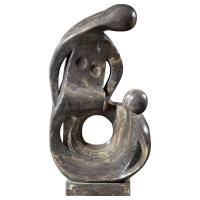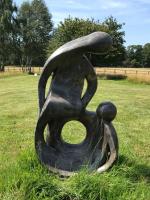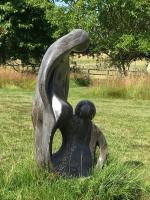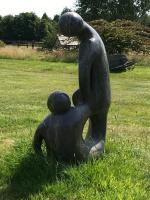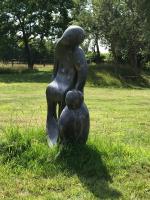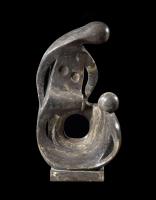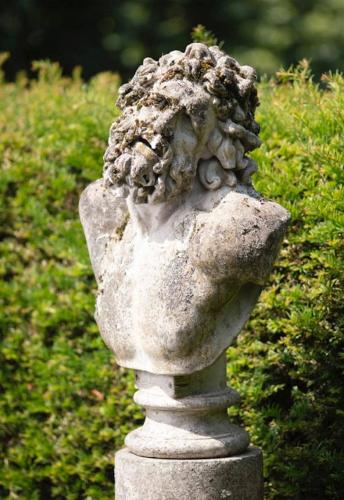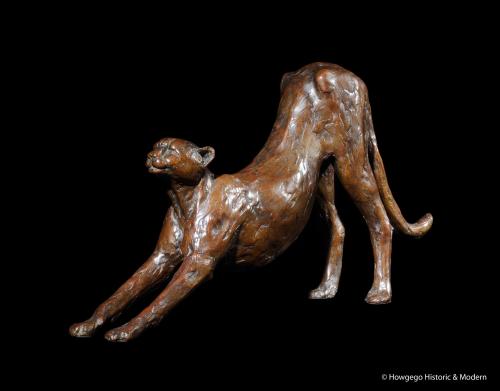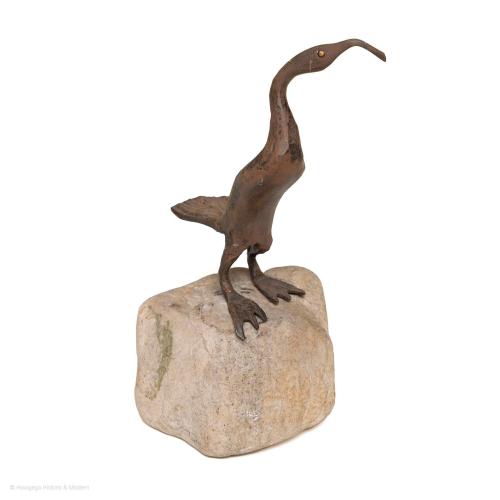
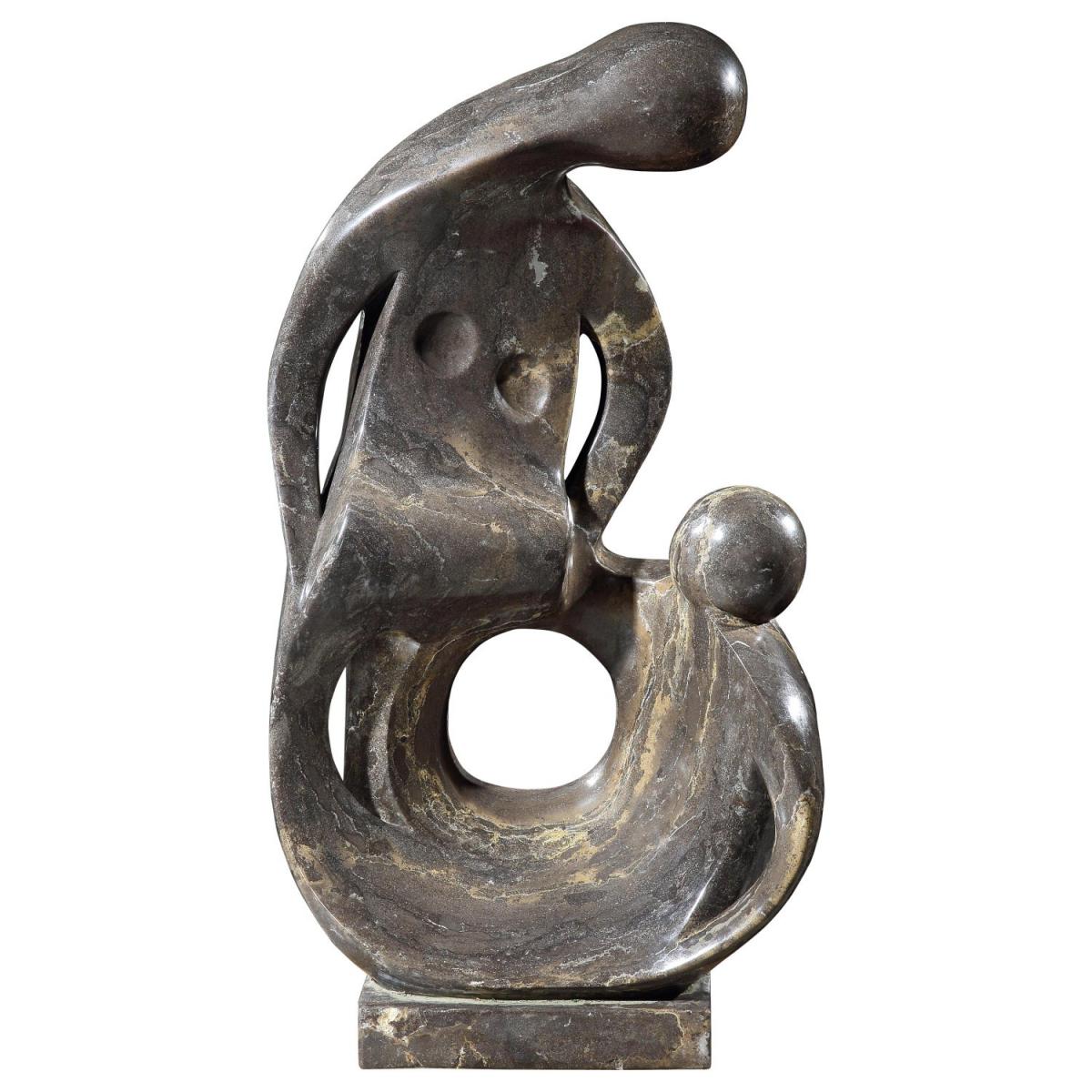
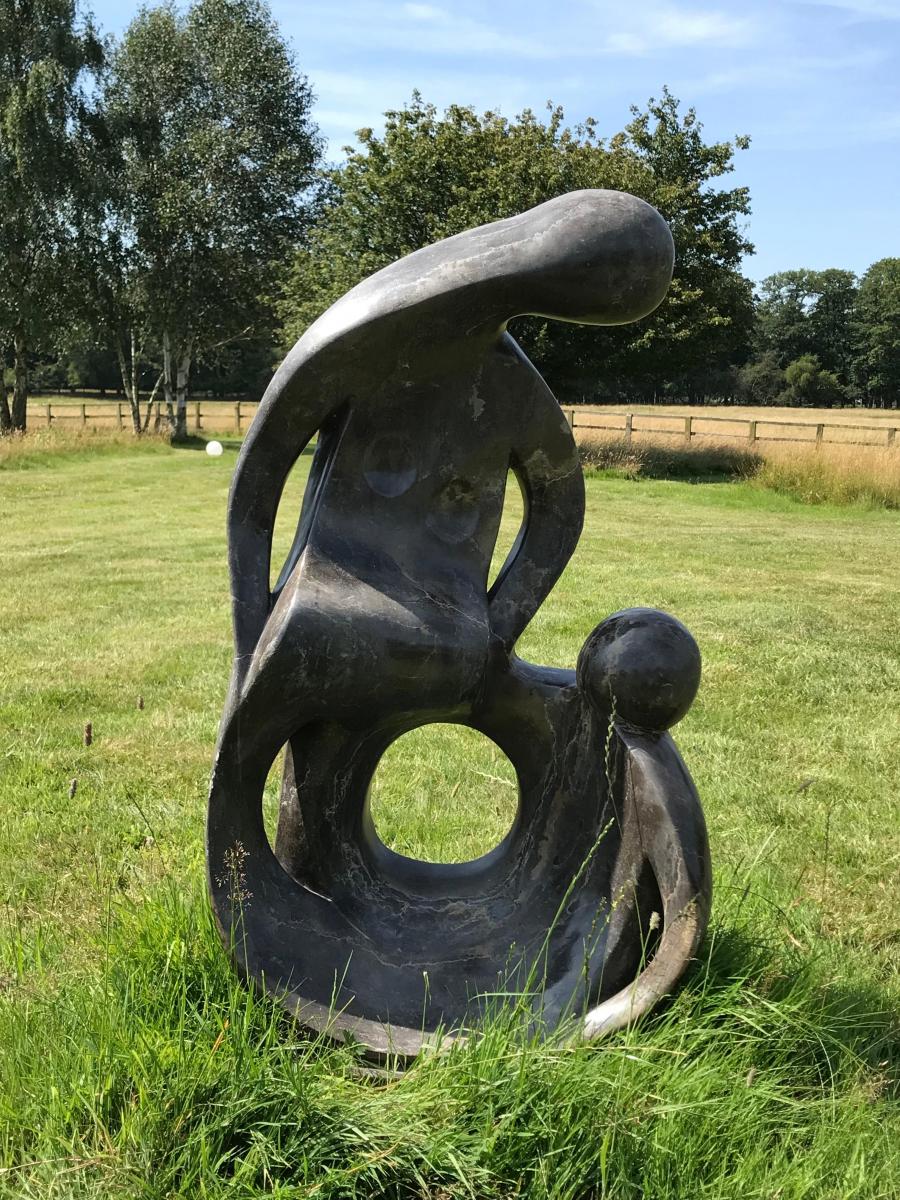
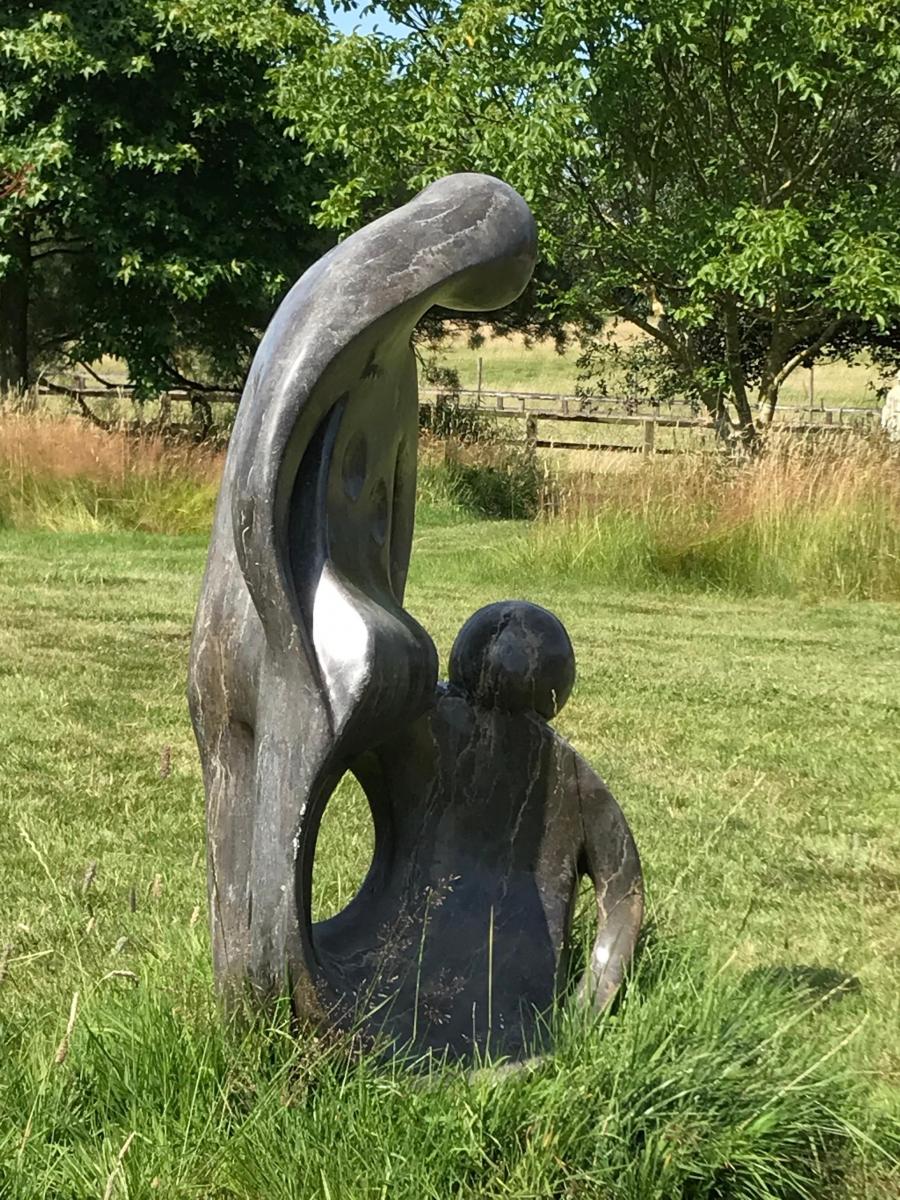
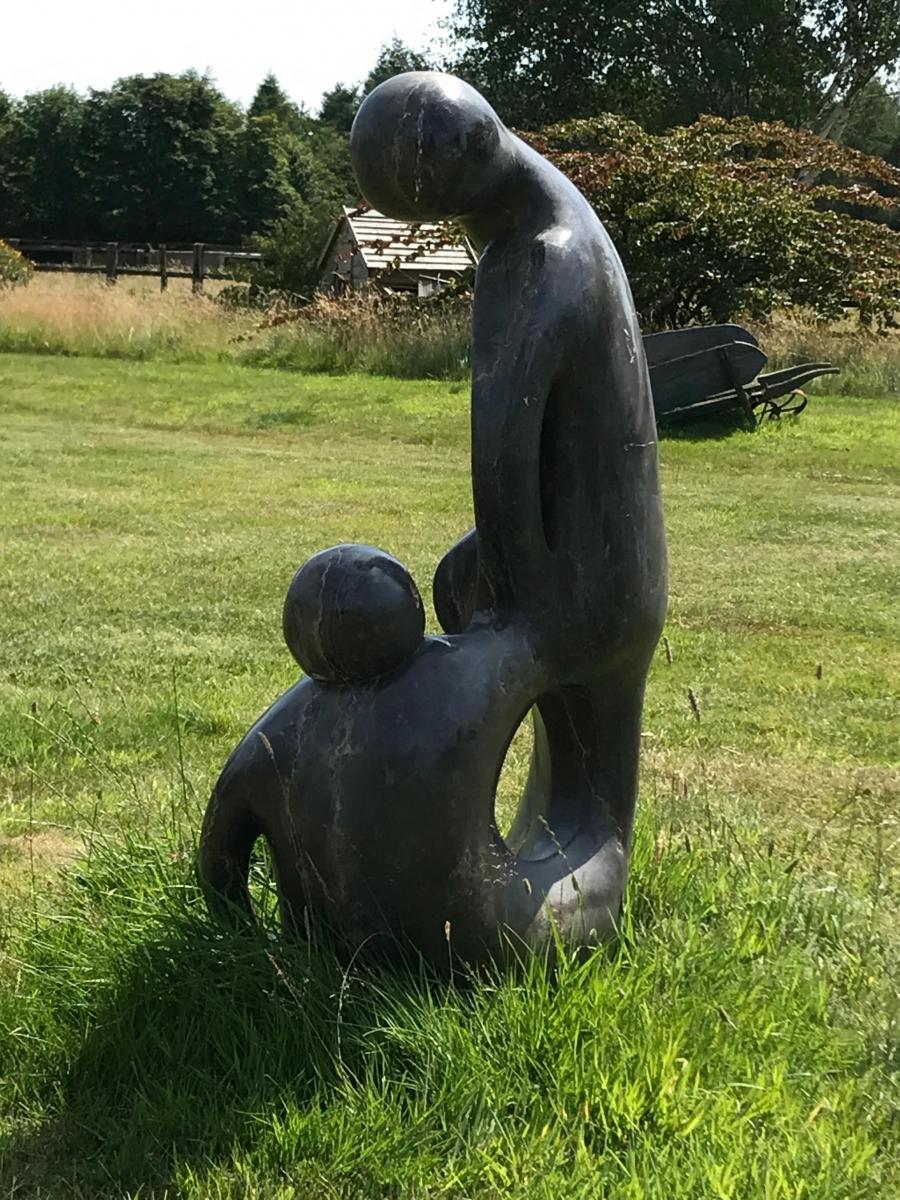
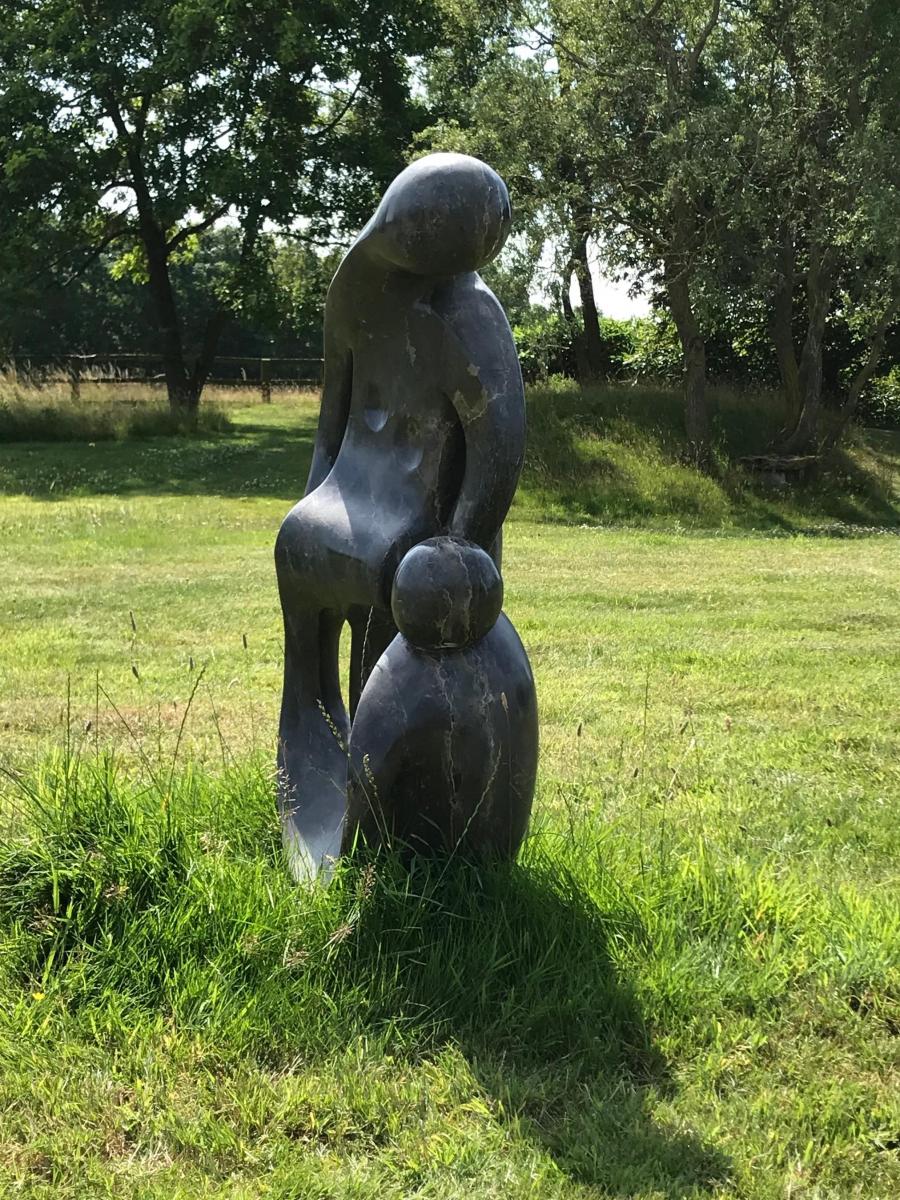
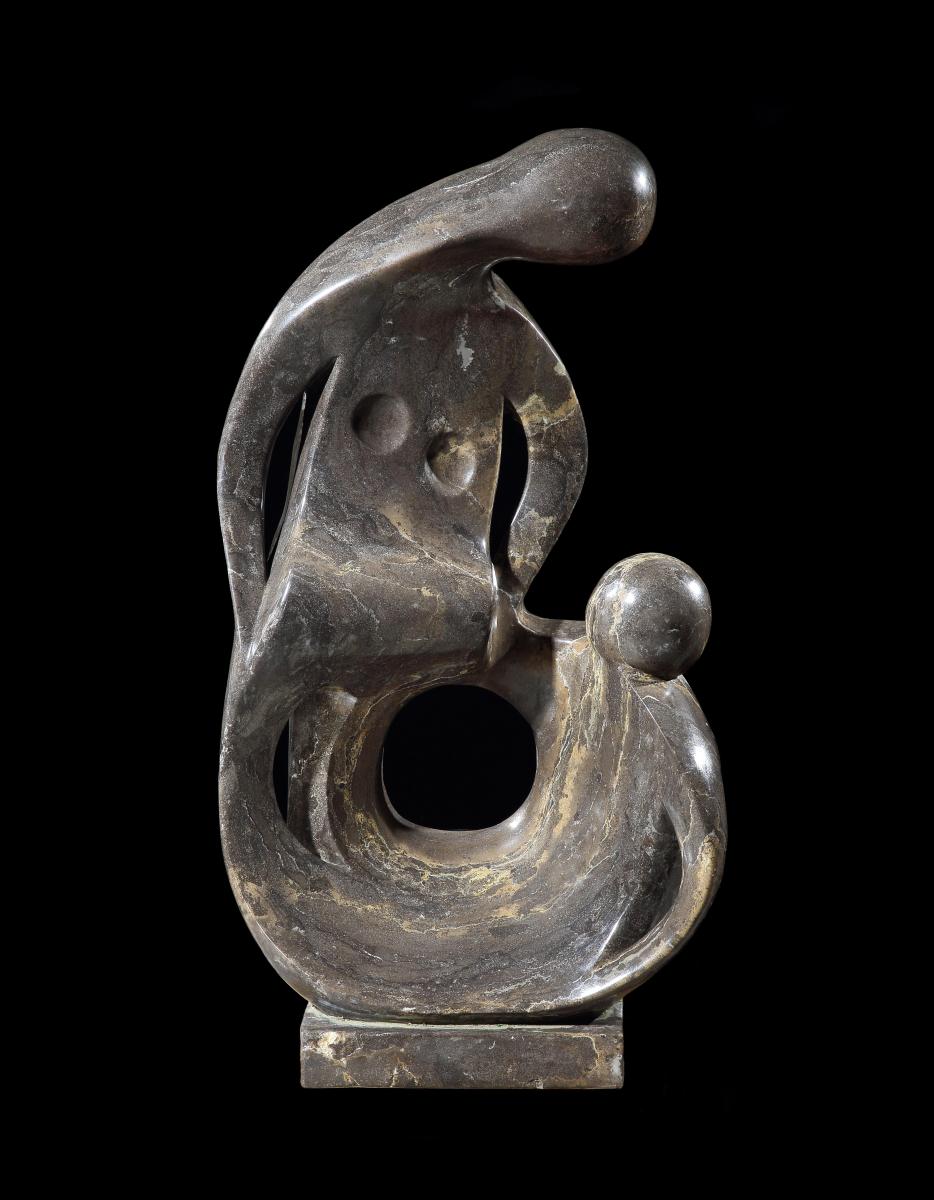
This object is eligible for a Certificate of BADA Provenance
The BADA Standard
- Since 1918, BADA has been the leading association for the antiques and fine art trade
- Members are elected for their knowledge, integrity and quality of stock
- Our clients are protected by BADA’s code of conduct
- Our dealers’ membership is reviewed and renewed annually
- Bada.org is a non-profit site: clients deal directly with members and they pay no hidden fees
A massive 116cm high modernist Henry Moore, mother and child inspired abstract, biomorphic, grey, marble sculpture, 20th century. Artist unknown.
Measures: Height 116cm, width 65 cm, depth 30 cm
Provenance: Private Collection acquired, late-1980s.
This massive sculpture is inspired by Moore’s bronze and plaster sculptures from the late 1970s-early 1980s where the form is pared down with the characteristic opening. The theme of a ‘Mother and Child’ sustained Henry Moore throughout his career, from his earliest carvings to his final monumental sculptures.
As Moore wrote in 1979, the theme was: ‘one of my two or three obsessions, one of my inexhaustible subjects. This may have something to do with the fact that the "Madonna and Child" was so important in the art of the past and that one loves the old masters and has learned so much from them.
But the subject itself is eternal and unending, with so many sculptural possibilities in it, a small form in relation to a big form, the big form protecting the small one, and so on. It is such a rich subject, both humanly and compositionally, that I will always go on using it’ (the Artist, quoted in Alan Wilkinson (ed.), Henry Moore –Writings and Conversations, Berkeley, 2002, p.213).
Moore described himself as ‘naturally ... more a carver than ... a modeller’. Stone represented much more than a material to Henry Moore, it was a perfect metaphor for the evocative relationship between sculpture and nature that had such a central role in his art. Stone was Henry Moore’s favourite material for sculpture, even during the periods when most of his output was in bronze.
The only significant break in his use of stone occurred during the Second World War, essentially because of the uncertainty of the times and the difficulty of sourcing good blocks. Stone was always at the forefront of Moore’s practice and although he treated it differently during his career, he never doubted its centrality in his art.
This marble sculpture is equally striking displayed inside the home or outside within a landscape. As a medium marble is very practical outside as it is hardwearing and the patina will only improve with weathering over time. Moore was driven to create works that defined opened spaces - he said: "Sculpture is an art of the open air... I would rather have a piece of my sculpture put in a landscape, almost any landscape, than in, or on, the most beautiful building I know." Moore’s sculpture can be found the gardens of Chatsworth House, Yorkshire Sculpture Park, Kew Gardens and the Fitzwilliam Museum.
In 2016 a record price of £24.7million was achieved for a 1951 modernist sculpture Reclining Figure: Festival of Britain Masterpiece. At a fraction of the price of an original Moore, this marble sculpture offers a viable opportunity to introduce the spirit of the artist and the timeless quality and unconditional love of motherhood which is a central theme in Fine art into a home or landscape.
Biography:
Henry Spencer Moore (30 July 1898-31 August 1986) was an English artist. He is best known for his semi-abstract monumental bronze sculptures which are located around the world as public works of art. As well as sculpture, Moore produced many drawings, including a series depicting Londoners sheltering from the Blitz during the Second World War, along with other graphic works on paper.
His forms are usually abstractions of the human figure, typically depicting mother and child or reclining figures. Moore's works are usually suggestive of the female body, apart from a phase in the 1950s when he sculpted family groups. His forms are generally pierced or contain hollow spaces. Many interpreters liken the undulating form of his reclining figures to the landscape and hills of his Yorkshire birthplace.
Moore became well known through his carved marble and larger-scale abstract cast bronze sculptures, and was instrumental in introducing a particular form of modernism to the United Kingdom. His ability in later life to fulfil large-scale commissions made him exceptionally wealthy. Despite this, he lived frugally; most of the money he earned went towards endowing the Henry Moore Foundation, which continues to support education and promotion of the arts.
The BADA Standard
- Since 1918, BADA has been the leading association for the antiques and fine art trade
- Members are elected for their knowledge, integrity and quality of stock
- Our clients are protected by BADA’s code of conduct
- Our dealers’ membership is reviewed and renewed annually
- Bada.org is a non-profit site: clients deal directly with members and they pay no hidden fees


